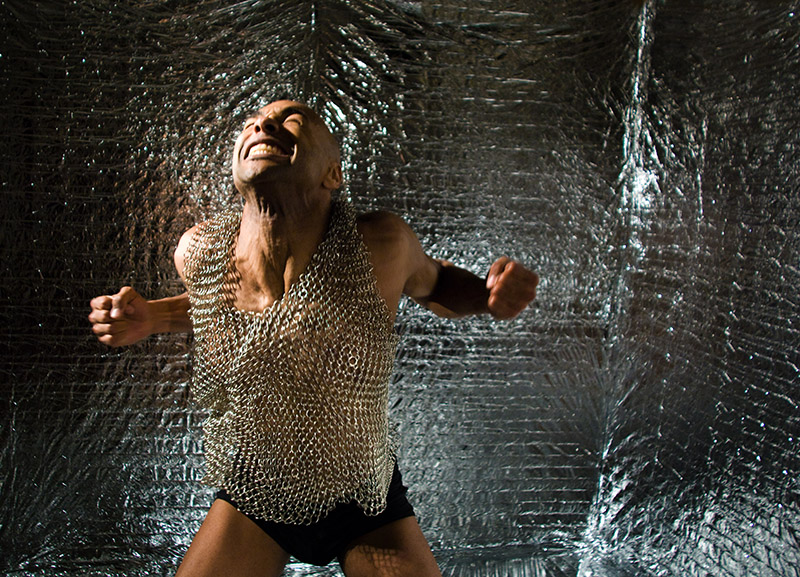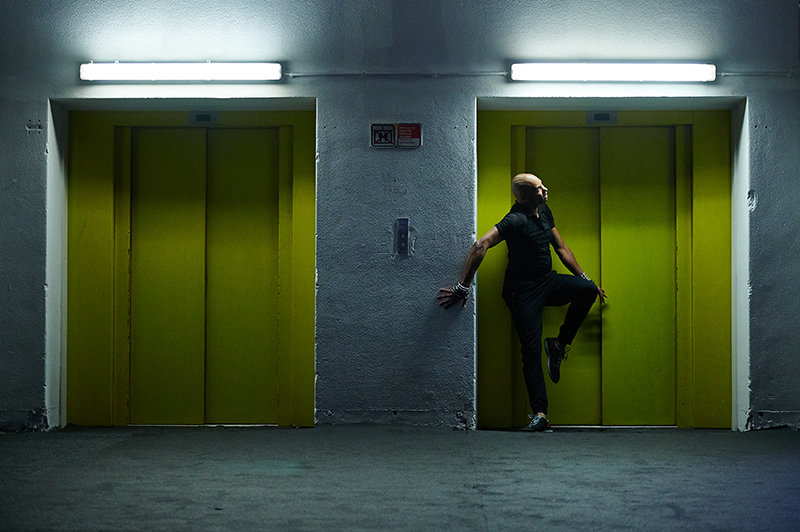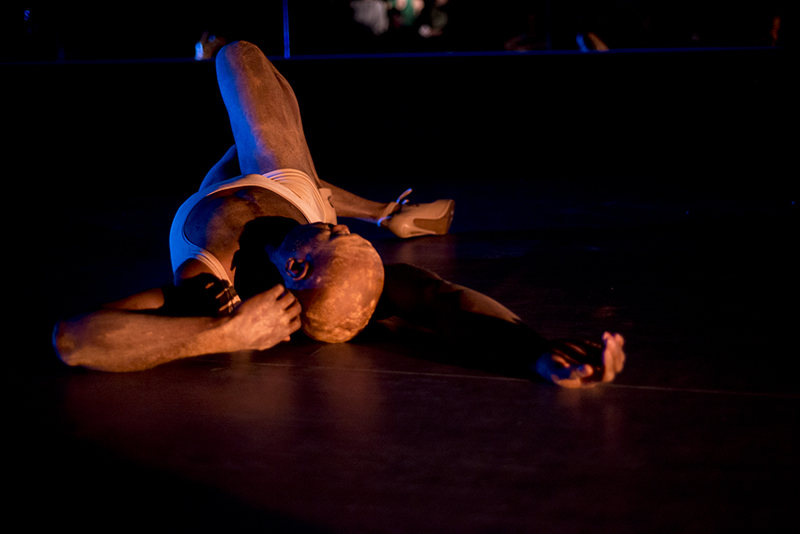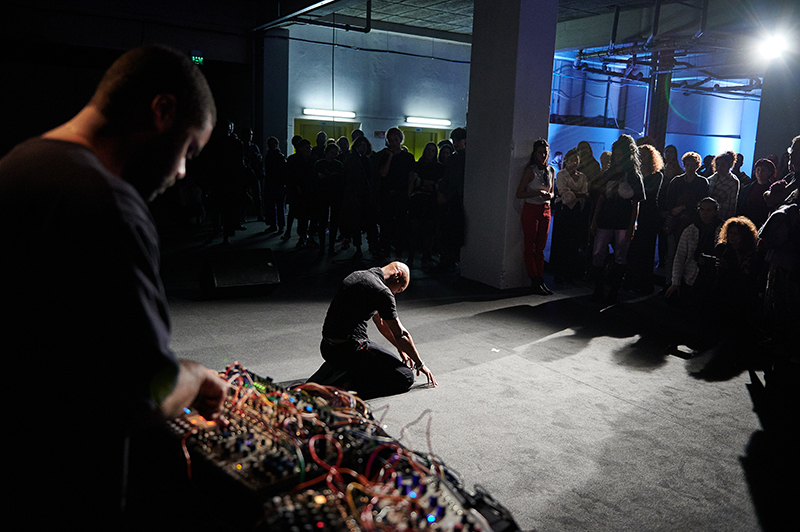Endurance, Longevity, and Rest
In Conversation with Darrell Jones
BY JILL RANDALL
Darrell Jones is an award-winning artist based in Chicago. He is a tenured professor at Columbia College Chicago and a longtime collaborator with Bebe Miller and Ralph Lemon. He has also worked with Min Tanaka, Ronald K. Brown, and Urban Bush Women. Also a choreographer, Darrell has had residencies at MANCC (Maggie Allesee National Center for Choreography) and the Chicago Dancemakers Forum.
Note: This conversation was first published in Stance on Dance’s fall/winter 2023 print issue. To learn more, visit stanceondance.com/print-publication.
In July, I reached out to Darrell for an interview for Stance on Dance. Darrell considered the ask, and responded with a request to shift to a conversation versus a Q and A. He noticed that one of my areas of research is on “endurance and longevity” in dance and wondered if we could have a conversation on this topic. Here is our edited dialogue from a Zoom conversation on July 21, 2023.
A bit about this topic for me: I am playing with all the uses of these words in our field.
Endurance: evening length works, long runs of shows, multiyear projects, staying in the dance field overall, the aging body, and touring.
Longevity: career paths, all the aspects of a life in dance which make us whole (teaching, performing, writing, choreographing, etc.), mentoring, burnout, and the role of teaching within many artists’ careers.
Rest: self-care, stepping away, reflection, burnout, shifting interests, morphing interests, non-dance life, saying NO to projects, and care for the teaching body.

Photo by Bill Frederking
~~
Darrell Jones: I appreciate you being open to the conversation. It feels right.
When I got the request, I did a little snooping. I saw those words endurance and longevity – there is something I connect with. I have a specific instance when that came up. Was there an instance or pathway into that for you?
Jill Randall: I am playing with the words in a variety of ways. I also happen to be married to an endurance athlete. I think a lot about career paths. My website Life as a Modern Dancer is focused on these topics, of longevity in the field.
How do we keep doing this? What keeps us hopeful? As a teacher – burnout is very real. I think a lot about mentors. I honor my mentor Ruth Bossieux, who is in her mid-80s.
I loved what you already riffed off of in our email thread the other day:
My practice with endurance has been mainly in performance practice. How I trained it in myself, how I have trained it in others. Tactics, techniques, and philosophies. The endurance/resistance continuum. Power/Anti-Powerism. The physical philosophy of the Tabata. “Low” practice and endurance with Ralph Lemon. Performing the virtuosity of rest. The Sovereignty of Quiet: Beyond Resistance in Black Culture by Kevin Quashie.
I have been a huge fan of yours for nearly 20 years. This week, I found my notes from 10 years ago, when you performed A History in San Francisco with Bebe Miller in 2013. Marc Bamuthi Joseph facilitated a conversation after the show with you, Angie Hauser, Bebe Miller, and Talvin Wilks.
- Marc asked the group about exhaustion and how it affected the piece. (The dance was only two dancers for the whole piece.)
- Can we all go someplace else?
- Interior places, exterior places
- Transform the space
- “From inside the piece”
- “Interested in BEING us on stage and you watching us BE” – Angie Hauser
- What is it that we do?

Photo by Jose Caldeira
Darrell: You have created a larger arc for me in terms of thinking about these words. I had been thinking about them in terms of practice. I had thought of them in terms of longer practices of things, but I had not thought about the arc of a career. I am now also thinking about generational arcs that are longer than my presence here. It does something different to my body just in thinking about that. It is a time-based thing.
There is one particular thing, working with Ralph Lemon. We had been doing this intense improvisation for five minutes. Then he asked us to do it for 20 minutes. That felt ridiculous. So what developed was the process of how to do that. We all took different ways. Gesel Mason had a poetic way – describing the movement and trajectories to involve the body in that way. Okwui Okpokwasili had a sonic way – the way the voice was involved in that. In and out, and in and out over time. I had a similar interest. What are the metrics? It is 20 minutes. What do I need to train in order to do that? A lot was very physically based. Explicit things – oh, run on a treadmill. Do it for 10, then 15. Accumulating the effort. It worked, I think, to a certain extent. My father was a philosopher, a theologian, and a researcher on the mechanisms of oppressions. He saw the work that we did, and he said it reminded him of an essay by Camus called The Myth of Sisyphus.
Camus’ premise was that Sisyphus was happy rolling this rock up the hill because he was alive. So then I was thinking about training to get through it. Sisyphus – particulation in the experience. Happy as shit when he gets it to the top. But he has to keep doing it over and over again. But the particulation of the thing – that is very lifelike. So, my internal attention turned to feel all those moments. And it did. It shifted.
My stamina inside it was very different. There were moments. I could feel things. I could see that. It opened up the experience. I held on to this idea – the idea of endurance – not just getting through the thing. But opening up to the experience of it.
Jill: We push through so much – the tour, the project, the semester. But I am thinking about “savoring.” I am thinking about seeing you in Landing/Place back in 2005. I think about the ending image (the lemons) a lot. You think about the breadth of your career – and to tap into those memories. I appreciate what you said about the presence and savoring the moment. Really being able to celebrate, appreciate, and remember at this point in your career. Of memory and reflection.
Darrell: The first thing coming up for me is cross-training memories. The experience with Bebe Miller and that worldview was very different in some ways than working with Ralph, which was really different from Min Tanaka. They don’t always live in the same room. They value very different things. Rehearsal processes, performances, vocabulary, virtuosity, where it happens. It has been about pluralisms. At one point I was trying to integrate all the things. But it seemed like the postmodern aesthetics were the strongest ingredients. It evened out everything else. Really noticing where that particular vocabulary had a resonance felt really important.
Thinking about these topics, I did not put rest in there too. I think I read what you had written about rest, but in my brain I oriented around endurance and longevity. I am thinking about making it invisible – the rest. I am curious about your take on rest. Is it in relationship to, or something in and of itself?

Darrell Jones in SSII Post Butoh Fest 2015. Photo by IAMKIAM Studios.
Jill: I was coupling it together. I am a huge fan of Tricia Hersey and The Nap Ministry. It was so taboo for so many years for dancers to talk about rest. We did not talk about the tired body or asking for time off. We are go go go. How many things are on your calendar this year? “What are you working on?” we keep asking each other.
How can we shift the culture in dance? I wanted to pair them together in a mental health way. How can we stop grind culture? We are perpetuating it all the time. What does rest look and feel like? Traveling, reading, even having a hobby.
And then, to be able to keep doing it… to be able to keep performing, to keep teaching. Also the topic of the care of the teaching body. All the demonstrating and prepping.
With your academic schedule at Columbia College Chicago, are you having a time of rest this summer?
Darrell: It is curious to me. The rest was something I did after or from the rigor. I paired them in that way. “I do this thing so I can rest.” It was in reference to the rigorous activity. Resting, so then I can do the rigorous activity again. There was a shift, in terms of a practice of rest. It was related to Ralph. Both of us got really curious; what was happening there in the rest period? Physically, what was happening? How much time did that take? What was the pace of that? And that started to become a practice. That was actually harder than the rigorous thing; it felt like nothing was happening. It felt empty.
We started to label it “Low.” The only way I could practice it without feeling I was going to have a breakdown was to do the rigor. Oh, to Sisyphus it…to feel my bones, the breath. To particulate the experience. It has become a thing. It is not necessarily watchable. But, to have a sort of choreographic attention placed towards the understanding of this thing has been a transferable skill in terms of, “Oh, I can practice that while doing the rigor.” Because you practice it in the body. It shifts your tone.
Rest – I was not necessarily thinking about it. I was allowing the body to do what it did, and not paying attention to it. But “Low” shifted my body’s awareness in it. There is a rigor of it, in terms of stamina. There is virtuosity in a different way.
Jill: Can you talk a bit about your teaching life?
Darrell: I have been doing it for almost 18 years now. I am now moving towards an “on and off semester” situation. It feels important that I redistribute that time for my body. It’s not reaching a point of a sharp cutoff, but knowing that that distribution of time needs to shift. There is a mentoring going on, and listening, listening to what that is. Making decisions in accordance to that. It is not the school telling me this, but the situation is mentoring me in a different way. Mentoring can be interpersonal, but also there is a mentoring by situations and environments. It has been very clear to open up to that and listen to that.
Jill: Situation…environment. And deeply listening. It also seems that your heart is really clear, in terms of what needs to shift. Your division of time.
Darrell: Clearer in my heart than head. It’s going into a situation that might not be as stable or consistent. But it feels in my heart – I want to create space for younger energy to come in.
It is not the end of a thing or a career. But there is natural progression in terms of our bodies. If I am really listening, I need to reshape the types of tasks I am doing in terms of the profession.

Photo by Jose Caldeira
Jill: I hear you talking about the students, your own career, but it is bigger than you. What serves them, what serves you. I feel like a lot of colleagues are not up for talking about it.
Darrell: I have good examples. Bebe Miller…she continues to dance. The arc of working with her – the vocabulary shifts in terms of her body. It is a mentoring and such a lesson. Understanding the work. She is continually understanding.
I don’t bemoan it. It feels like a gift to be here. Someone once said to me, “Once an adult, twice a child.” That curiosity. Now returning to that.
~~
Jill Randall is the artistic director of Shawl-Anderson Dance Center in Berkeley, CA and an adjunct assistant professor at Saint Mary’s College. Jill writes for Life as a Modern Dancer and Dance Teacher. Jillrandalldance.com
